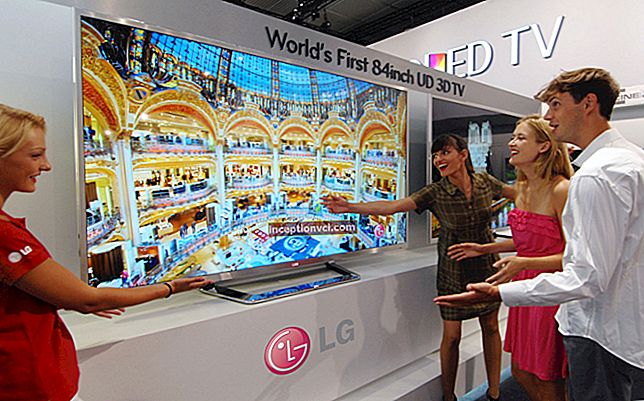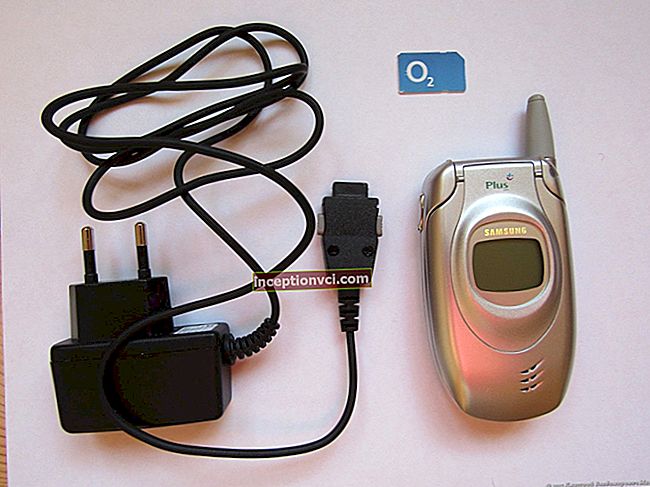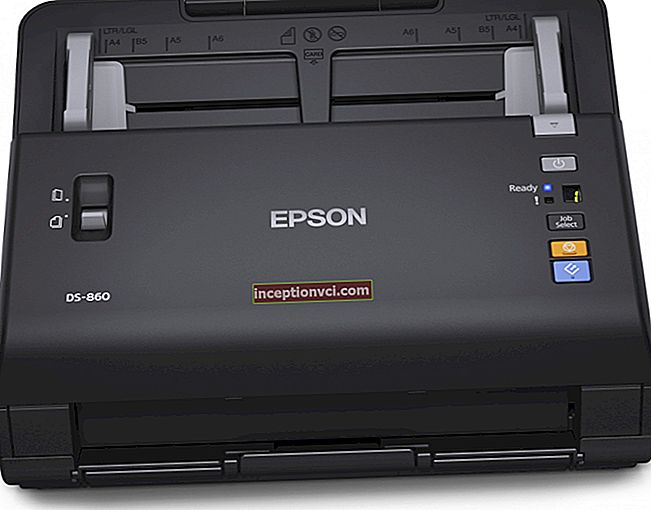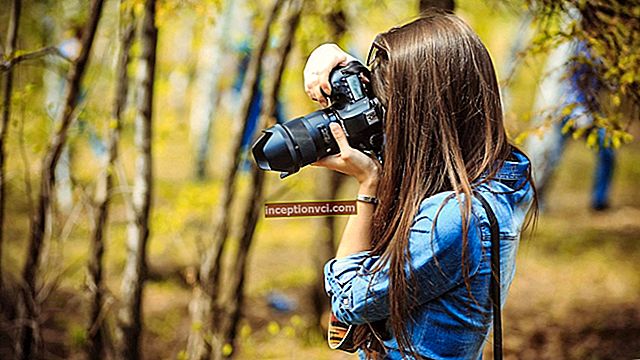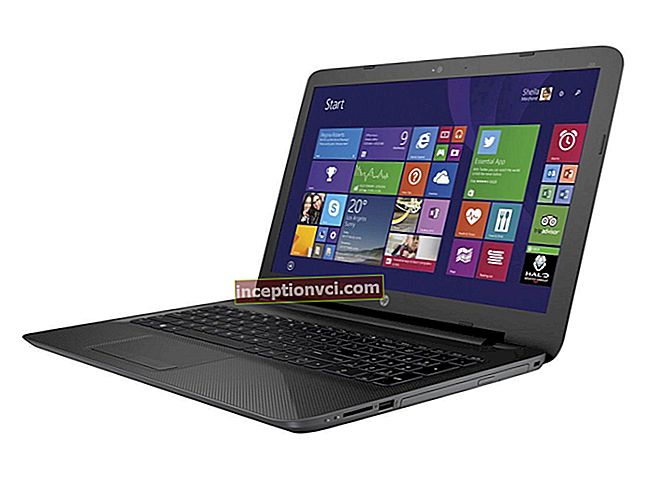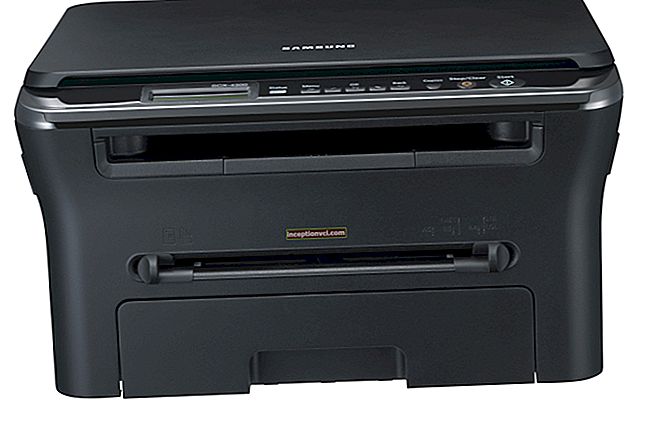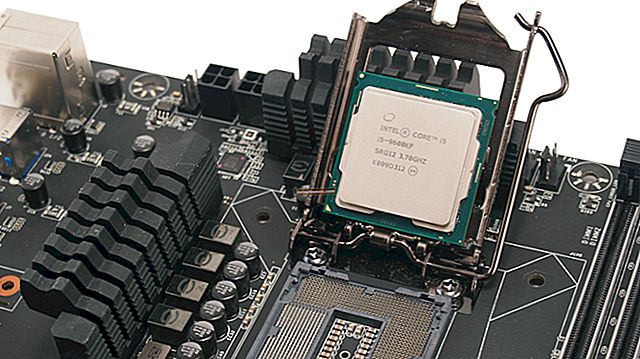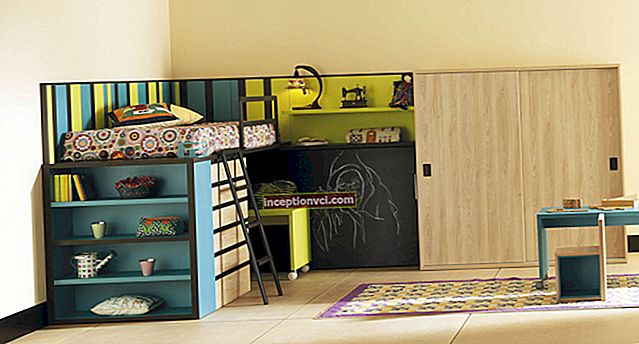Mirrorless cameras from the renowned Japanese manufacturer Sony have been around for almost two years. During this very short period of time, the line has already been updated twice. The company is currently actively developing its NEX series of mirrorless cameras. A little earlier, models NEX-5N, NEX-3 were presented and began to be sold. Then the line was updated with cameras Sony NEX-7 and Sony NEX-6, which today are devices of the upper price segment. And more recently (in the fall of 2012) at the world photo exhibition Photokina a new product was shown - the Sony NEX-5R camera, which, both in price and in technical characteristics, is inferior to the NEX-7 and NEX-6 models. The Sony NEX-5R is the lower end of the NEX line.
Sony Alpha NEX-5N is a modified version of the NEX-5N model. It is inferior to the next seventh series, but is already focused on fairly advanced photographers. The novelty has a 16.1 MP APS-C CMOS sensor (with a total number of pixels - 16.7) with a very large sensitivity range from ISO 100 to ISO 25 600, a modern BIONZ graphics processor, a new fast hybrid autofocus system Fast Hybrid AF, proprietary E-mount for attaching interchangeable lenses for NEX cameras, external flash, 3-inch slide-out LCD touchscreen, dual electronic level sensor, stereo microphones, built-in Wi-Fi (with PlayMemories Mobile App), HDMI and USB ports. Sony Alpha NEX-5R shoots photos in RAW and JPEG formats, and AVCHD HD videos in HD 1080p. In addition, the camera has many interesting features and options. For example, the device can download some applications from the Internet. In addition, if you have a smartphone with Android or iOS operating system, then it can be used as a remote viewfinder for the camera. You can send the footage directly to your smartphone or upload it to the Internet. Unlike the older NEX-6 camera, the NEX-5N has neither a hot shoe for connecting an external flash, nor an electronic viewfinder.
The NEX-5N (unlike the older cameras in the line, which are sold only in black body color) can be purchased in black, white and silver design options. The range is not very large, but there is a choice. This will definitely increase the number of potential buyers.
The competition in the segment of system cameras is serious today. It was a few years ago that the number of mirrorless cameras on the market was limited. Today, most major manufacturers produce their own line of system devices. For example, Samsung has NX, Pentax has Q, Nikon has Nikon 1, Canon has EOS M. Consumers have a wide choice. Among the models of the lower price segment, Sony Alpha NEX-5N rivals such devices as Samsung NX1000, Pentax K-01, Panasonic LUMIX DMC-GX1K.
Acquaintance
The design of the Sony Alpha NEX-5N is nothing new compared to earlier models. Sony engineers did not reinvent the wheel and used a proven design that worked well in the past. The appearance of the device practically repeats other models of the NEX line. Considering that the Sony Alpha NEX-5N camera is equipped with a rather large APS-C sensor, its body is very light and small in size. So, the thickness of the chamber is 39 millimeters, and the length is about 11 centimeters. The weight of the camera with battery and memory card (but without the lens) is about 280 grams. Of course, the mass together with the lens can vary depending on its type and reach the order of half a kilogram (with a large telephoto lens). In general, if the device can easily fit in a pocket of trousers or a shirt without a lens, then its dimensions with optics will obviously not allow it to be done. Therefore, you will have to carry the camera in a bag or on a shoulder strap. The main materials for the camera body are polycarbonate and durable magnesium alloy. Due to the use of lightweight materials, the weight of the apparatus was reduced.A rubber strip is visible on the protruding right side. Together, these two elements (cover and projection) make it easier to grip the camera by hand and make the ergonomics of the device very pleasant. Visually, the NEX-5R looks like a miniature digital display. But this is not at all the case, serious electronics are hidden inside it. The surface texture of the device is resistant to impacts and deformations. The build quality is amazing. On a five-point scale of 5 plus.
An important element of a digital camera is its matrix. Simple physics says: the larger the physical size of the sensor used, the better the quality of the resulting image. System devices from different manufacturers use matrices of different physical sizes - 1 / 2.33 "(as on digital compacts), 1" (Nikon 1 system) or Micro 4/3 "(on some Olympus and Panasonic cameras). Sony engineers have chosen the largest possible for a mirrorless camera APS-C format sensor (23.5x15.6 mm). Such is used in amateur SLR cameras. Sony Alpha NEX-5N is equipped with a 16.1 megapixel Exmor APS HD CMOS sensor with the widest sensitivity range from ISO 100 to ISO 25600. One of the advantages of a large sensor - the ability to blur the background The sensor is equipped with built-in phase detection sensors that determine the distance to the subject and increase the speed of the AF system. Contrast sensors provide ultra-precise targeting. The combination of phase and contrast methods is the essence of the new Fast Hybrid AF system. proprietary BIONZ, which reduces noise, processes images with high fast, provides fast focusing and shooting.

The front panel is equipped with a bayonet mount with contacts and a lens lock button, a remote control sensor (for remote control), an autofocus light (it is also the self-timer indicator of the Smile Shutter function). For Alpha NEX system cameras and NXCAM camcorders, Sony engineers have developed an E-mount. It has an 18 mm flange distance (like Canon's EF-M mount) and a 10-pin digital interface. Almost 3 years ago, the first lens came out with a new mount. Today the fleet of optics with Sony E mount is already quite wide: 2 kit lenses (18-55 mm f / 3.5-5.6, PZ 16-50 / 3.5-5.6), telephoto lenses (18-200 mm f / 3.5-6.3, 18-200 mm f / 3.5-6.3 LE, 55-210 mm f / 4.5-6.3), wide-angle lenses (10-18 mm f / 4, Carl Zeiss Sonnar T * E 24 mm f / 1.8, 16 mm f / 2.8), fixed for portrait shooting (50mm f / 1.8 OSS), macro fixture (30 mm f / 3.5 Macro Lens).
All Sony lenses are of impeccable quality in optics, materials (metal alloy, durable plastic, rubber) and workmanship. Some of them are produced in several colors (in the same colors as the camera bodies). By the end of 2013, Sony plans to bring the total number of brand lenses to 15. For the NEX line, lenses from other manufacturers are also available on the market: Sigma (19 mm f / 2.8 EX DN and 30 mm f / 2.8 EX DN) and Tamron AF 18- 200 mm f / 3.5-6.3 XR Di-III VC.
The camera can be sold either without a lens (body), or as a set with PZ 16-50 mm f / 3.5-5.6, 18-55 mm f / 3.5-5.6 or PZ 16-50 mm f / 3.5-5.6 + 55-210 mm f / 4.5-6.3. By the way, the PZ 16-50 mm f / 3.5-5.6 lens is a novelty. It is more compact than the kit 18-55 mm f / 3.5-5.6, which was equipped with almost all NEX cameras before. It is equipped with an electromechanical Power Zoom system. A ring and a slider (spring-loaded slider) are used for zooming at the same time. It should definitely be said that not all lenses support hybrid autofocus yet.
In addition, today there are many adapters for Sony A lenses and third-party optics (Canon EF, Contax, Leica, Micro 4: 3, Nikon, Olympus, Pentax, even Soviet ones with M42, M39 threads and others). Such an adapter must be purchased additionally.

The top panel of the NEX 5R features a shutter button with a power switch around it, a customizable "Fn" button, an external flash compartment, a pair of stereo microphones, a level mark, and a command dial. A built-in Wi-Fi sensor is located directly below the top panel. As you can see, there is no built-in flash or a traditional "hot shoe" for connecting external flashes and other Sony branded accessories on this model. An external flash HVL-F7S, which is included in the kit, is attached to the compartment on the top panel using a conventional screw connection and contacts.The location of the external flash minimizes the appearance of red-eye in images by increasing the angle between the lamp and the optical axis of the lens. The effective range of the flash according to the manufacturer's data is up to 14 meters. In real life, it is really very powerful, but the range is about 10-11 meters. The flash can operate in automatic mode, as well as rear-curtain sync, fill, slow sync.
On the right side of the camera there is a small metal eyelet for attaching a shoulder strap, and on the left there is the same eyelet plus a compartment with HDMI, microUSB / A / V ports and a charging indicator. The compartment with ports is protected from dust, moisture and dirt with a special rubber cover. Note that the usual port (3.5 mm) for connecting an external microphone is not provided. The only thing left is to use Sony branded external microphones.

The rear panel of the camera has a fairly simple look and is not overloaded with elements. It contains:
The junior camera of the NEX line does not have a viewfinder and is not overloaded with controls. All buttons are quite comfortable and pleasant to press. It's great that there are several programmable buttons. They can be customized for specific functions individually.
The bottom panel of the device is equipped with a reliable metal tripod connector (located exactly along the axis of the lens), a speaker, a cover for the battery compartment and a memory card with a built-in port for an AC adapter, an access indicator and a sticker with a serial number and other information. The camera is equipped with a rechargeable InfoLITHIUM smart battery (Li-Ion). Its capacity is 1080mAh. It can be charged using a power adapter from a standard electrical outlet or from a computer's USB port. Full charging time is about 180-200 minutes. A fully charged battery will last approximately 350-360 shots. The camera supports Memory Stick (PRO Duo, PRO-HG Duo), SD, SDHC and SDXC memory cards up to a maximum capacity of 64 GB and Eye-Fi cards with wireless transmission. A standard 2GB card can record about 280-290 pictures in JPEG format (maximum quality and resolution), 103-104 in RAW, or 11 minutes of HD video in Full HD (AVCHD).
_ ** Package contents ** _: camera, battery module, kit lens 18-55mm (or two lenses), front lens cap, lens hood (for telephoto lens 55-210mm), power adapter, power cord, shoulder strap, USB cable, external flash in a special box, CD with software and electronic manual, paper user manual and warranty card. The camera is wrapped in white synthetic material. All components are in separate plastic bags. There are no memory cards in the kit, no HDMI or USB / A / V cables are provided in the box either. Additionally, you can purchase a matching camera bag, any E-mount lens, third-party mount adapters, a Sony external microphone, a remote control, and a few other accessories. The camera and lens we are reviewing were manufactured in Thailand at a Sony factory.
The camera menu is controlled by touch and mechanical controls. The menu of the device consists of the following main sections: "Camera", "Image size", "Color", "Playback", "Application", "Settings".
The Camera submenu allows you to change drive, shutter (touch and normal), flash, focus modes, set up face detection and registration, select an autofocus area, digital zoom, enable smile shutter, soft skin effects, help, and more.
In the "Image size" submenu, you can set the standard photo parameters (resolution, aspect ratio, file type, JPEG compression rate), panorama and video parameters (image size, number of frames per second and quality).
The Brightness / Color submenu offers color adjustments to the image. For example, using HDR, exposure compensation, white balance, ISO sensitivity, effects, and creative photography styles.
The "Playback" submenu will help you to see the finished pictures and videos in the form of a slide show, thumbnails of various scales (6 and 12 pieces on the screen), histograms. Here you can scale, edit (rotate, crop) a photo, as well as send to print, send to a smartphone, to a computer and to a TV screen. You can delete all photos and video files or protect them from deletion. It should be said here that files are sorted when viewed by format: separate photos, separate videos. You cannot view everything in a row.
The Application submenu allows you to download some applications to the camera from the Internet.
The camera setup submenu is very extensive. It is divided into several sections: "Shooting options" (AF illumination, grid, AF options, Live View, Sharpness enhancement, SteadyShot image stabilization system, zoom, self-timer, correction of distortion, aberration, noise reduction, etc.), "Basic settings" ( touch control, buttons, date, time, time zone, language, display brightness, wired connection via USB and HDMI, etc.), "Memory card" (file numbering, folder names, memory formatting, etc.), "Eye- Fi "," Network settings "(MAC-address, access points, WPS, etc.).
In general, the menu is very convenient, but it is difficult to call it simple. Although the menu has a clear structure, it will take some time to master.
The main modes of photography are as follows:
The camera amazes with a huge number of useful functions:
Shooting
Compact size, excellent ergonomics and excellent controllability allow you to quickly get used to the control of the camera. The device turns on very quickly. Just 1.5-2 seconds and the camera is ready to shoot. The shooting and focusing speed is very fast. The shutter releases in 0.05 seconds. The camera focuses for about 0.27 seconds at the near end of the zoom and 0.3 seconds at the far end. In normal single-frame mode, the shooting speed is about 1.2 frames per second without flash and 1 frame / s with flash. Continuous shooting speed of 3 and 10 frames per second in both JPEG (maximum resolution) and RAW formats. Very decent performance.
Photo shooting is available in the JPEG and RAW file formats, as well as in the combined version of RAW + JPEG. The file compression for the JPEG format is set to 2 types. A total of 6 types of different resolutions with 2 types of aspect ratio (16: 9, 3: 2). The highest image resolution is 4912x3264 pixels, the smallest - 2448x1376 pixels. It is advisable to print photographs with different resolutions on paper of different formats and sizes. For example, for resolutions 4912x3264, 4912x2760, A2 and less are suitable, for 3568x2368, 3568x2000 - A3 and less, for 2448x1624, 2448x1376 - A4 and less.
The camera's picture quality is on par with that of entry-level DSLRs. Pictures of NEX-5N surprise with clarity, color saturation, sharpness. HDR mode allows you to take photos with a high dynamic range. Built-in special effects let you experiment with color characteristics. The camera shoots equally well indoors, in the field, and in low light.
Noise and night photography
The sensitivity of the matrix used on the Sony Alpha NEX-5R is automatically adjusted by the camera in the range from ISO 100 to ISO 25600. Manual adjustment of such values ISO 100/200/400/800/1600/3200/6400/12800/25600 is available. The noise is handled very well. In the ISO 100-3200 range, there is practically no noise in the pictures. At ISO 12800, noise is already visible when viewing images at 100% scale. Even at the highest ISO 25600, the shots look good. It must be said that there is much more noise in RAW images than in JPEG photos taken at the same ISO values.
The camera does a good job of shooting in the evening and at night. All thanks to a wide range of CMOS sensor sensitivity, Bulb mode and effective stabilization and noise reduction systems. But it is worth noting that when shooting with a tripod at long exposures with a whale lens, you need to turn off the stabilizer. Otherwise, it has the opposite effect.
Work with Wi-Fi
New to the Sony NEX-5R menu is the Applications section, which allows you to download free applications from the appropriate Sony service for creating some photo effects, retouching, bracketing, remote control and uploading pictures to the Internet.
After installing the PlayMemories Mobile app on an iOS or Android smartphone or tablet, you can use it as a viewfinder. It is also possible to remotely control the camera shutter release, as well as take photo and video files. The picture on the smartphone screen is updated in real time.
Photo direct upload is still available for two services: PlayMemories Online and Facebook.
For the applications to work, you must set up a wireless Wi-Fi connection. Everything is done simply and intuitively.
Shooting videos
Sony Alpha NEX-5R can record videos with stereo sound in high definition (Full HD - resolution 1920 x 1080 pixels) AVCHD with the following settings:
In addition, you can shoot videos in a simplified MP4 format:
The maximum time for 1 clip is 29 minutes, at the same time its size on the memory card is limited to 2 GB. During shooting, control of shutter speed, aperture and ISO values is available, you can make exposure compensation. Continuous autofocus works. You can turn off the sound on the recording at all. A noise filter is provided to suppress sound distortion. Optical zoom (on zoom lenses) and digital zoom can be used while shooting.
Through the HDMI port (or USB / A / V), you can view the footage on large plasma or LCD / LED TVs.
Final verdict
The pros:
The cons:
Sony Alpha NEX-5N is a compact mirrorless camera with very wide functionality. Despite the fact that this is a device of the lower price segment (NEX line), for beginners, it can be quite difficult (due to the presence of many functions). The camera takes photos and videos of very high quality. Many will be interested in the accessibility of transferring data over Wi-Fi and installing applications for processing and downloading photos.
